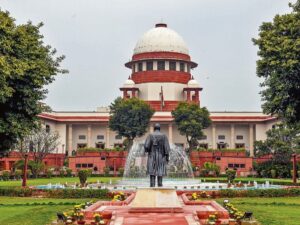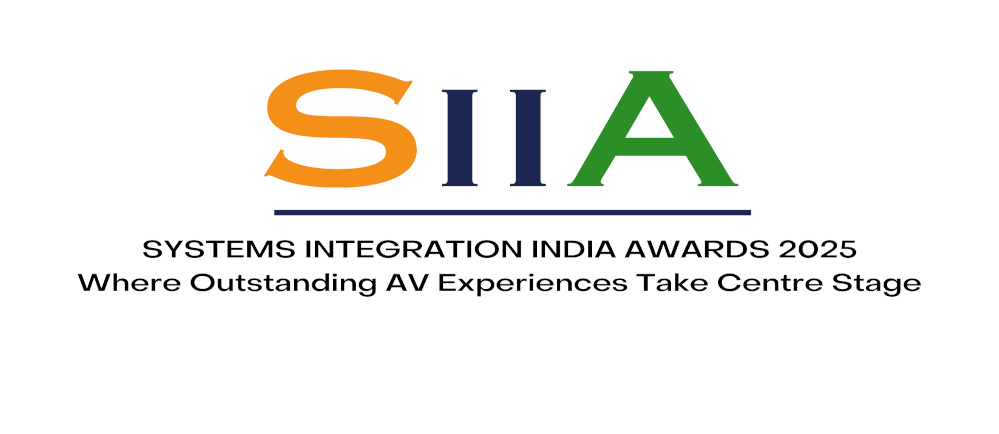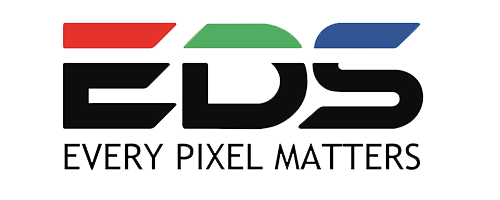BUDGET: Between 5 crore INR and 9.99 crore INR (More than USD672,000 but less than USD1.35 million)

Project photos are not attached due to confidentiality and privacy policies.
Project Overview
HAVI Design India LLP was selected to deliver a complete audio-visual conferencing solution for Courtrooms 4 & 5 at the Supreme Court of India in Pragati Maidan, New Delhi. This AV system has been designed to support smooth communication, video display, and hybrid (online + offline) hearings in courtrooms of national importance.
Each courtroom is equipped with a Bosch IP-based digital conference system with discussion units, dual microphones, and under-table speakers for crystal-clear sound. The conference software enables judges and staff to manage multiple microphone modes like open, override, or voice-activated, and includes features like priority alerts and speaker time limits.
The solution integrates AI-enhanced document cameras, 10″ touch control panels, motorised 17.3″ HD monitors for judges, and a 135” Full-HD LED video wall to ensure everyone in court sees and hears proceedings clearly. All components are connected via AV over IP encoders and decoders, which support low-latency 4K video and audio transmission, with remote switching and control.
Networked through 24-port PoE+ managed switches, the systems also include a powerful recording and streaming device, enabling 4K capture of multiple sources simultaneously.
What did the client want to achieve?
The client, CPWD on behalf of the Supreme Court of India, wanted to upgrade Courtroom Nos. 4 and 5 at Pragati Maidan, New Delhi, with a state-of-the-art audio-visual conferencing system. The main goal was to support digital court proceedings, ensure clear voice communication, support remote hearings, and make the overall courtroom technology-driven and future-ready.
The solution needed to be fully IP-based, with flush-mounted microphone units, under-table speakers, and hybrid integration for both physical and remote participation. The court required all systems to work silently and smartly in the background without disturbing the courtroom environment.
Reliable recording, display, control, and conference management software were critical for smooth operation by court staff. The Supreme Court also wanted easy-to-use touch panels for controlling the AV setup, high-quality motorised judge displays, and a large LED wall for public viewing.
Lastly, security, uptime, and centralised system control were high priorities, along with server-grade performance and minimal cabling visibility.
Scope of work your company was involved in
HAVI Design India LLP provided a complete end-to-end AV solution:
• Bosch IP-based Digital Conference System
Including discussion units with dual microphones, conference controllers & management software.
• Server PCs and Software
For real-time microphone layout control, speaker timer settings & remote device management.
• Audio Systems
Featuring under-table Bose cube speakers and 4-channel amplifiers paired with speaker-grade wiring.
• Video Display Systems
Each judge’s seat includes a 17.3” motorised touch monitor & both courtrooms feature a 135” LG LED display wall with mounting system and controller.
• Visual Presentation Systems
Integration of document cameras with up to 8.6MP zoom for displaying physical documents and exhibits.
• Control & Automation
AMX touch panel interfaces make it easy for staff and judges to operate the whole system from a single screen.
• AV over IP Backbone
Visionary encoders/decoders were installed to transmit 4K video and audio via standard network switches, supporting remote & hybrid hearings.
• Connectivity Infrastructure
Including HDMI cables, Cat 6 LAN cabling, power/data cable cubbies, and USB to HDMI converters.
• Stream & Record
A professional-grade lecture 4K recording device captures and streams courtroom activity.
What Key Challenges were faced?
There were a few important challenges during the project:
1. Room Acoustics: The courtroom had high ceilings and hard surfaces that made the sound bounce, creating echoes.
2. Aesthetic Limitations: The installation could not change the structure or appearance of the courtroom, so everything had to be hidden or blend in perfectly.
3. Security and Access: Working in a sensitive area meant that all team members and materials had to pass through strict security checks.
4. Limited Time for Work: Most of the work had to be done at night or during court breaks, which gave us a narrow window for installation.
5. High Standards: The client expected top-class quality and reliability, with no room for even minor issues.
How were those challenges resolved?
We found practical solutions for each challenge:
1. Better Acoustics: Our team did sound tests and adjusted microphone positions and settings to remove echoes and improve clarity.
2. Neat and Hidden Setup: We used custom tools and mounts to hide cables and devices inside walls, furniture, and ceilings.
3. Security Coordination: We worked closely with security staff, prepared documents in advance, and followed their rules strictly for smooth entry and exit.
4. Night Shift Work: Our installation team worked at night and on weekends to complete work without affecting daily court sessions.
5. Step-by-Step Testing: We tested each part of the system after installation, allowing time to fix any issues before the final handover.
These steps helped us deliver a trouble-free solution that worked flawlessly from day one.
How has your work helped the client
The installed system made a big difference to the courtroom experience. Here’s how:
• Clearer Communication: Everyone can hear and speak clearly, even if the person is sitting far away or speaking softly.
• Less Manual Work: The staff no longer needs to adjust microphones or worry about technical issues during hearings.
• Smooth Proceedings: The system is stable and works all day without problems, helping the court run efficiently.
• Neat Appearance: The system fits into the space without affecting the courtroom’s original design or layout.
• Ready for Future Needs: If the court wants to add video conferencing or other new features, the system is ready to support it.
The client gave positive feedback and was especially happy with how smoothly and silently the system operates.
What are you most proud of about the project?
We are most proud of delivering a high-end, future-ready digital courtroom system that balances technology, simplicity, and beauty in one of the most respected institutions in the country.
The entire solution works seamlessly in hybrid mode, allowing remote participants to join securely, while preserving the tradition and silent operation expected in a court setting.
Our engineers ensured a clean design, hiding all wiring and systems under desks, inside walls, and behind panels. Judges interact with a simple touch monitor, but behind that are more than 25 types of devices all connected reliably via AV over IP.
We are particularly proud of using premium international brands like Bosch, LG, AMX, Lumens, and Bose, integrated into a user-friendly interface with zero downtime, minimal training, and elegant aesthetics. It’s also expandable for future upgrades.
Completing this complex installation inside the Supreme Court premises, under tight security and strict timelines, with precision and quality, speaks volumes about our team’s capability and dedication.
This is not just an AV project—it’s India’s highest court digital transformation milestone, and we are proud to be behind it.












